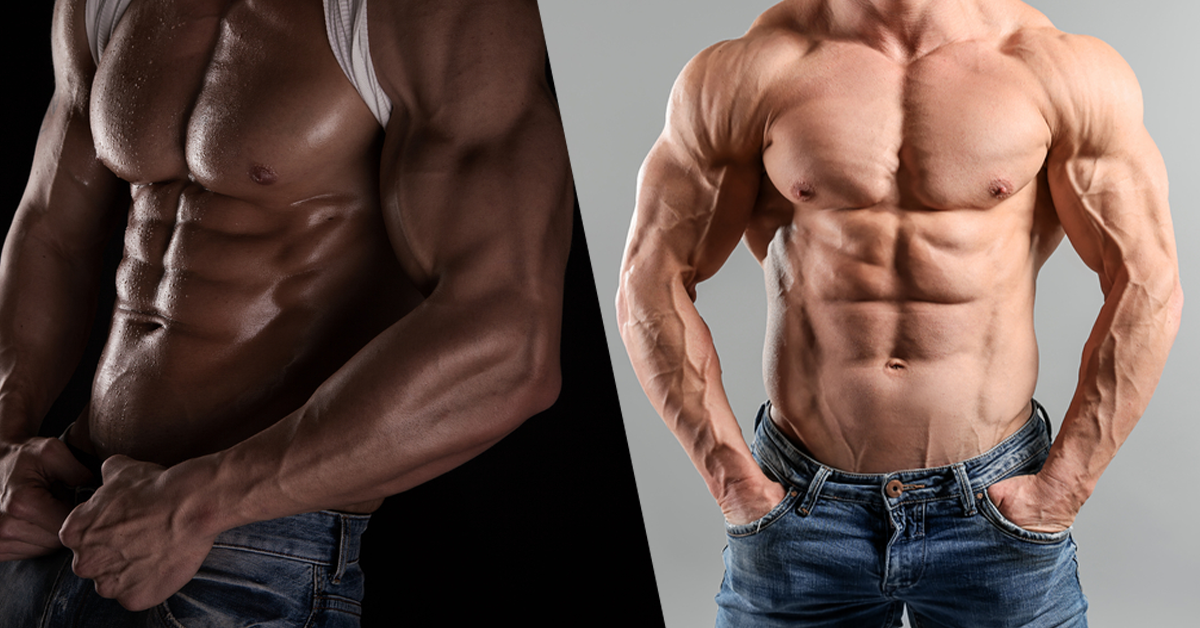Lean Muscle vs Bulk Muscle
In the world of fitness, many people are often clueless when it comes to the difference between lean muscle and bulk muscle.
Let us read about them to gain a clear and complete understanding.
Lean v/s Bulk
With bulky muscles, you appear pumped and bigger. On the other hand, your body looks more athletic and slimmer with leaner muscles. The interesting thing is that both lean and bulk muscles are not anatomically much different.
This is primarily because the type of tissues in muscles are the same and the main difference lies in the level of fat content around muscles.
In the case of lean muscles, less fat surrounds the muscle tissue making the muscles look rock-solid and the body slimmer. Conversely, bulk muscles tend to add to the overall muscle mass to give you a sturdy and bigger appearance.
When you say bulk muscles, it suggests that your muscles are primarily covered in fat. When you say lean muscles, it suggests that you've gained weight from water and muscles, and not from body fat.
Let us understand this concept with the help of an example. Suppose there are two people (A and B) who visit the same gym.
Person A may appear bulky while person B may appear toned. To a layman, person A built bulky muscles while person B built lean muscles.
This is simply because person A may have a higher body fat percentage that may have covered their new muscles with a layer of fat.
On the other hand, person B may have lower body fat that allows their new muscles to be more toned and visible.
Bulky muscles can be highly attractive and go a long way to improve self-confidence and self-perception. Big muscles also mean that you have a strong covering layer over the bones and underlying body structure.
This also protects the bones and underlying body structure from external damage. Furthermore, the bigger the muscles, the more energy they consume, and the more fat they burn.
On the other hand, lean muscles generally suggest a slender and flexible body. Cheating on the daily diet once in a while doesn't undo all the hard work as long-term fat loss is a characteristic of a toned body.
Lean muscles are also more flexible and offers a natural-looking physique.
Characteristics & Requirements for Lean Physique
- The level of proteins should be sufficient for maintaining muscle mass.
- The intake of calories should be in the deficit zone.
- The intake of carbohydrates should support your training while you lose fat.
- Lean body mass can be achieved once you start losing more fat as compared to gaining muscles.
- Lean muscles are primarily meant for endurance and strength. They help you perform more explosive movements faster.
- This form of body composition is characterized by less visceral fat and overall body fat.
- The body becomes more flexible as there is less burden on joints.
Characteristics & Requirements for Bulk Physique
- The level of proteins should be sufficient to support your training.
- The intake of calories should be in the surplus zone.
- The intake of carbohydrates should be high so you can have maximum energy to handle intense workouts.
- Bulk body mass can be achieved once you gain a lot of muscles and lose some fat.
- Bulky muscles are primarily meant for lifting heavier weights and becoming stronger.
- This form of body composition is characterized by larger muscles and overall body size.
- Aesthetic benefits such as big arms and broad shoulders can be generally noticed.
- It is characterized by faster metabolism since muscles are in a better position to burn more calories than fat.
We hope that this information on lean muscle vs. bulk muscle was useful to you in more than just a way.
Also Read:
5 Vitamins to Repair Muscles And Aid Recovery
How to Use Creatine for Muscle Growth?
Benefits of Fish Oil for Bodybuilding & Muscle Growth


